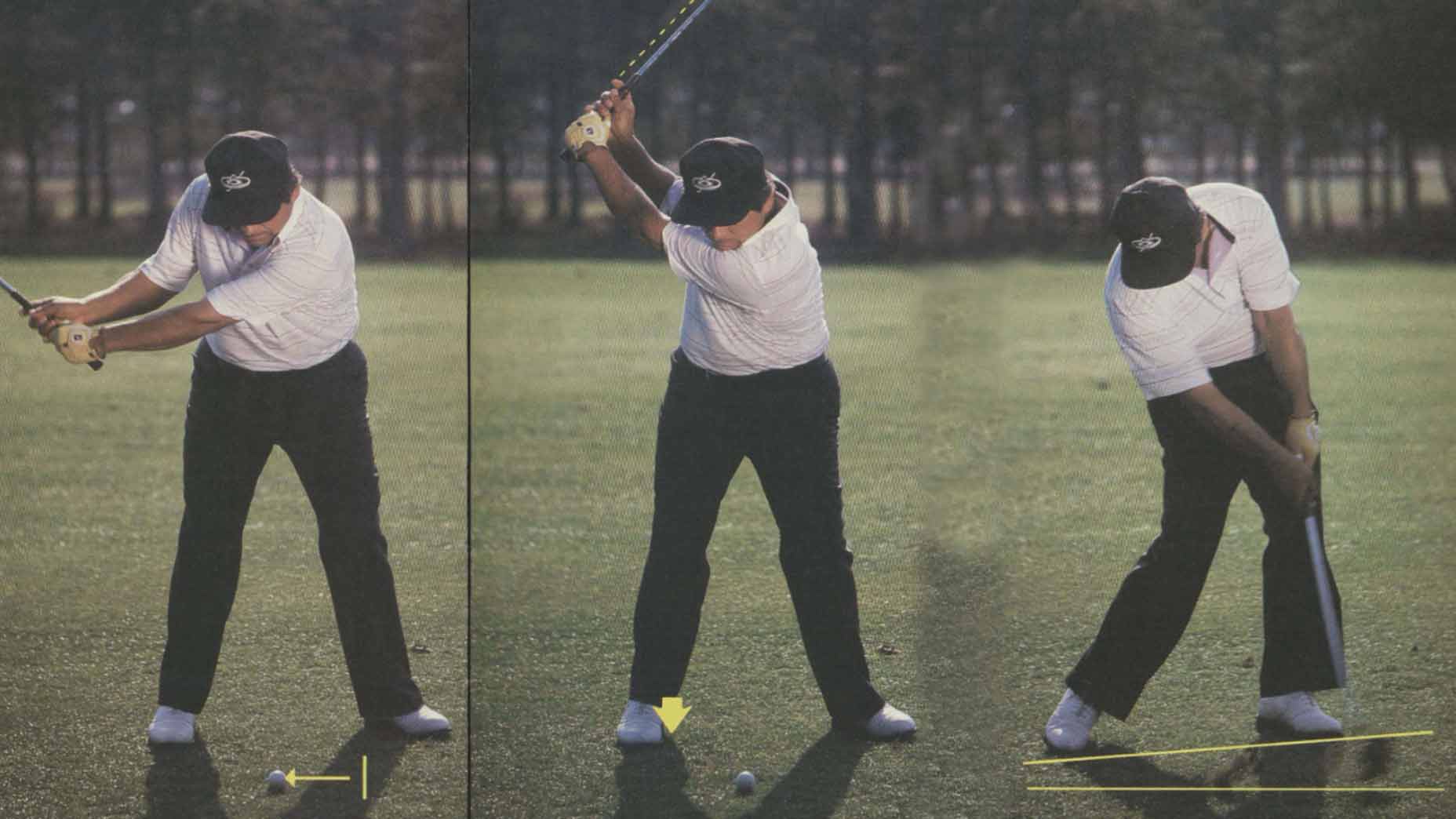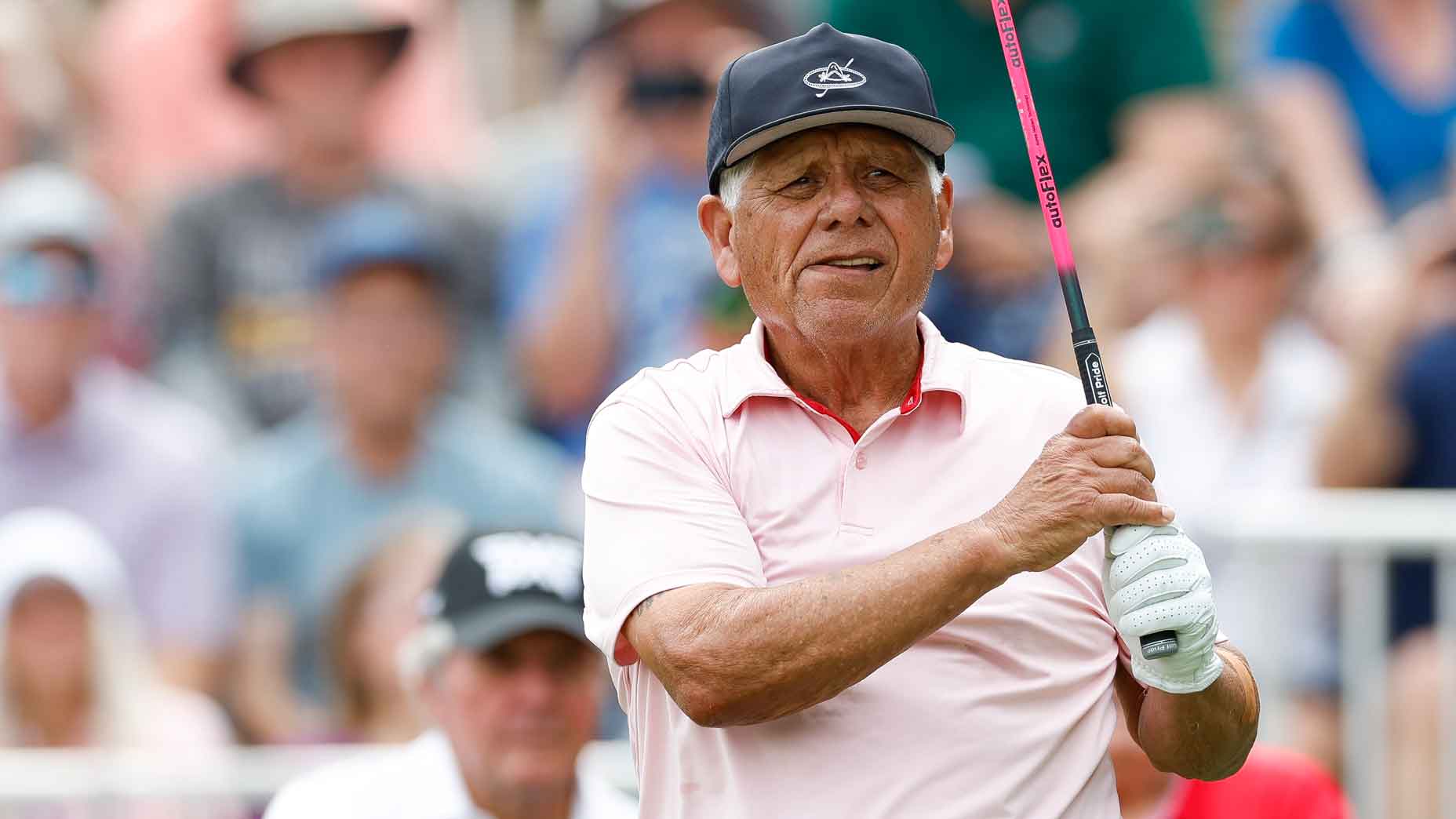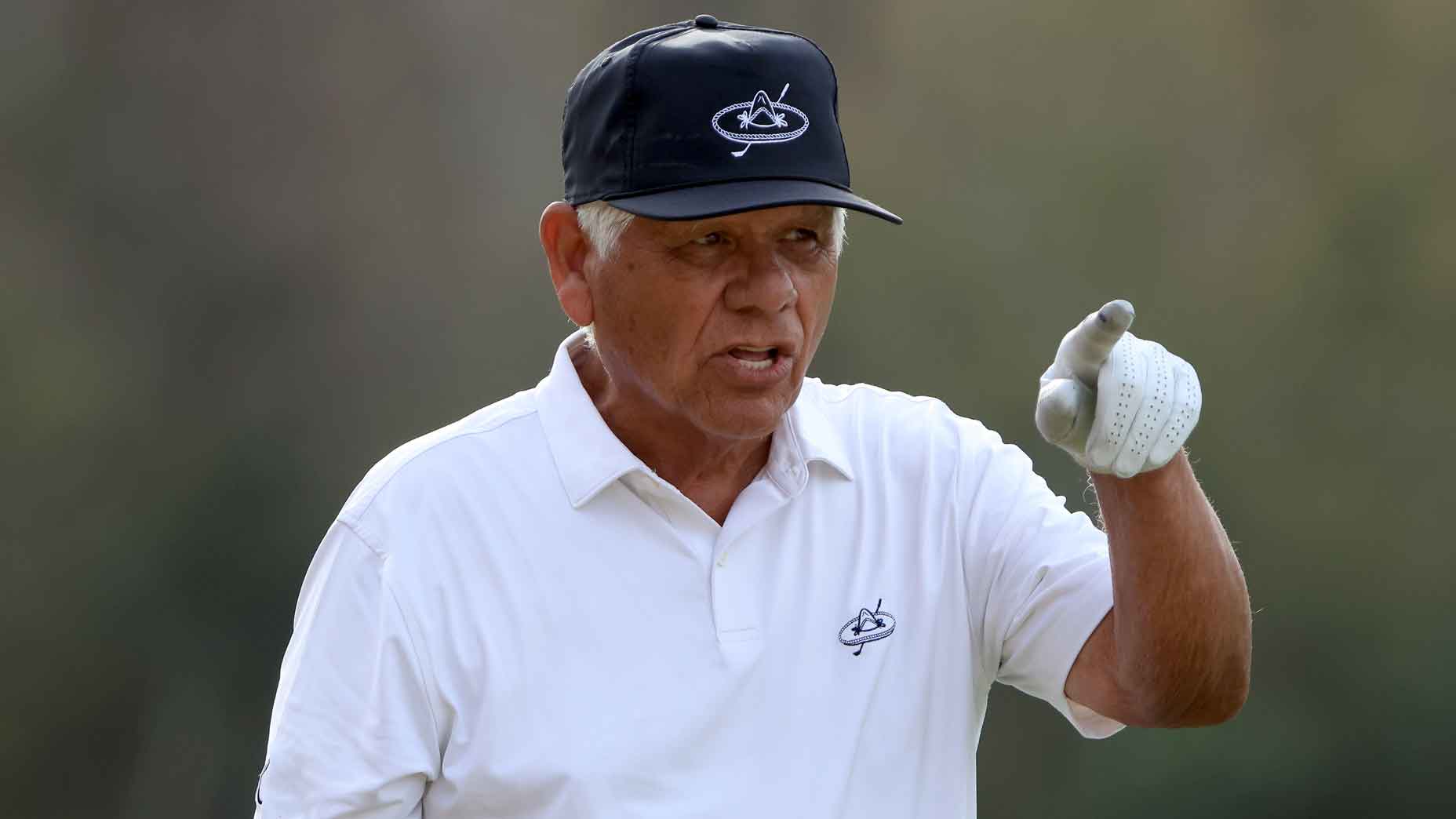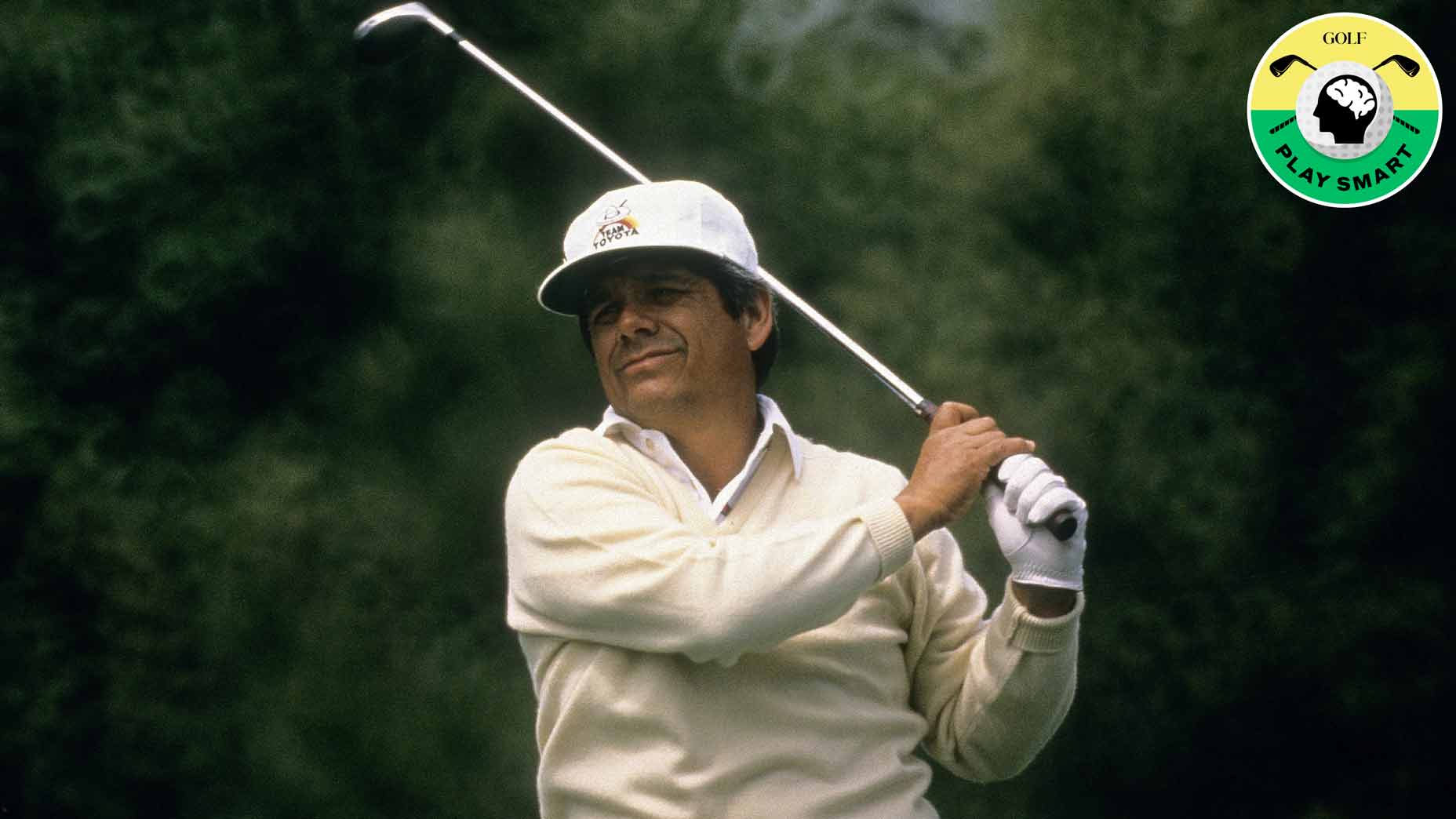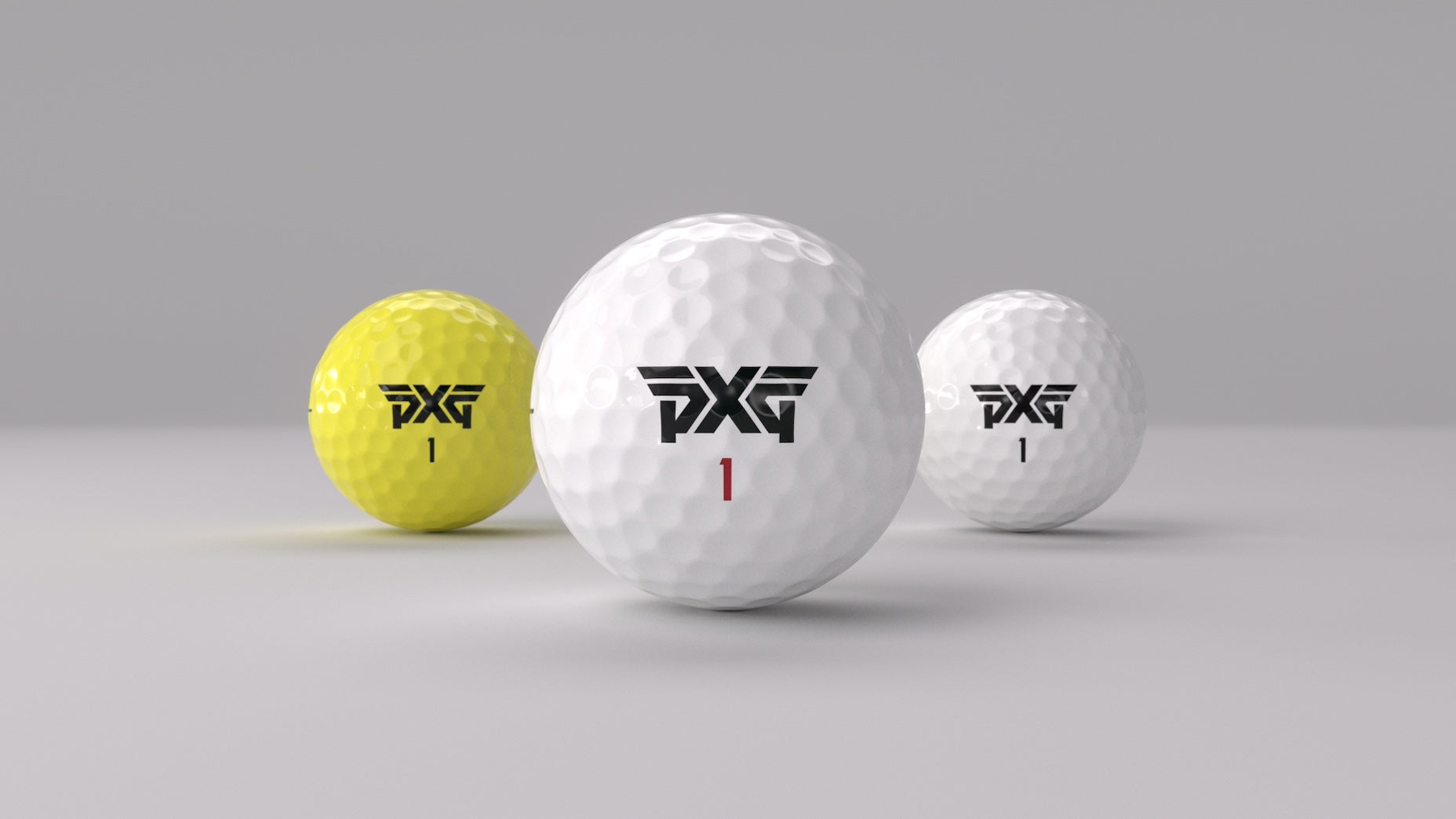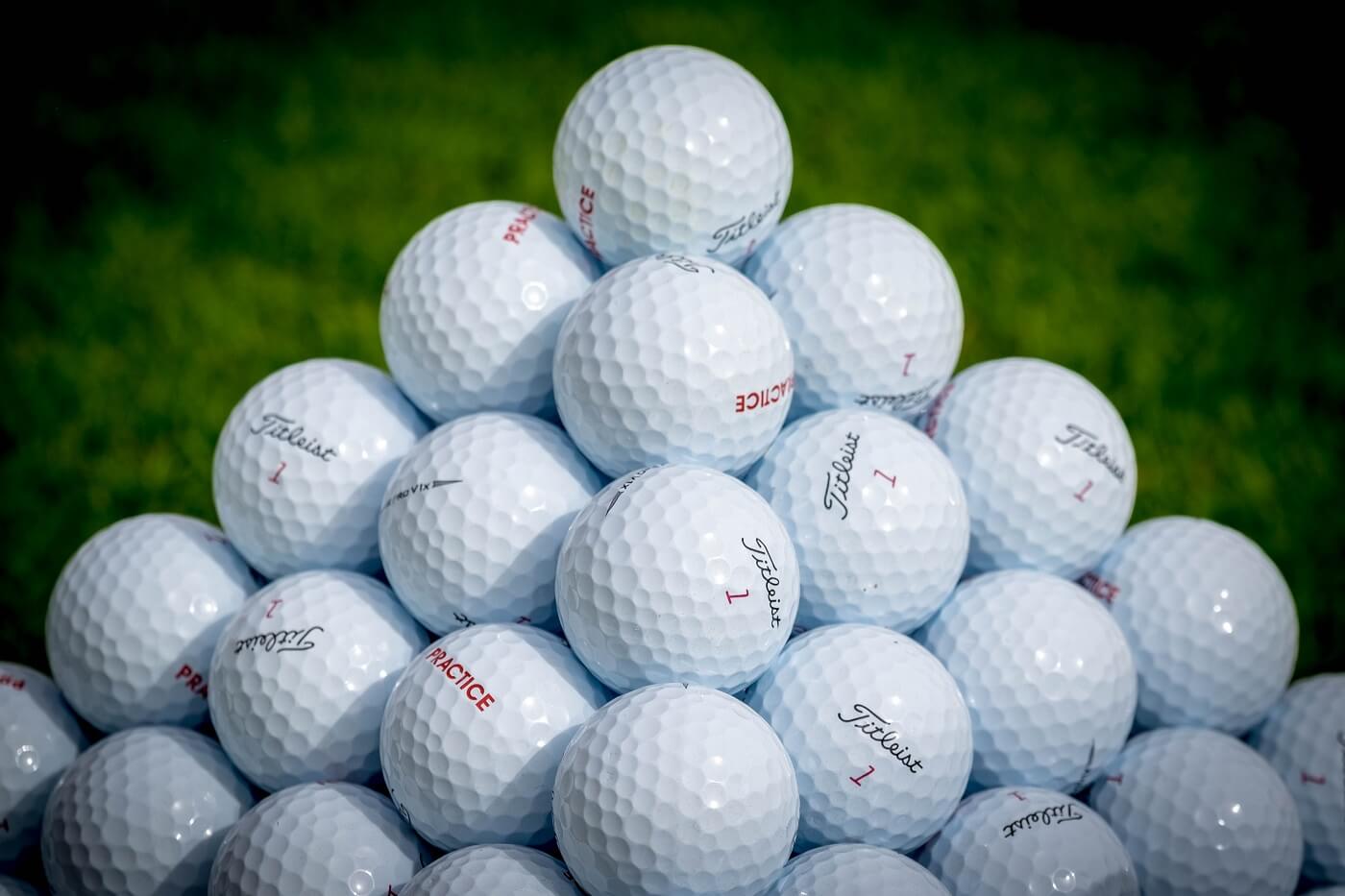Lee Trevino explains why your golf ball won’t spin — and how to change it
- Share on Facebook
- Share on Twitter
- Share by Email
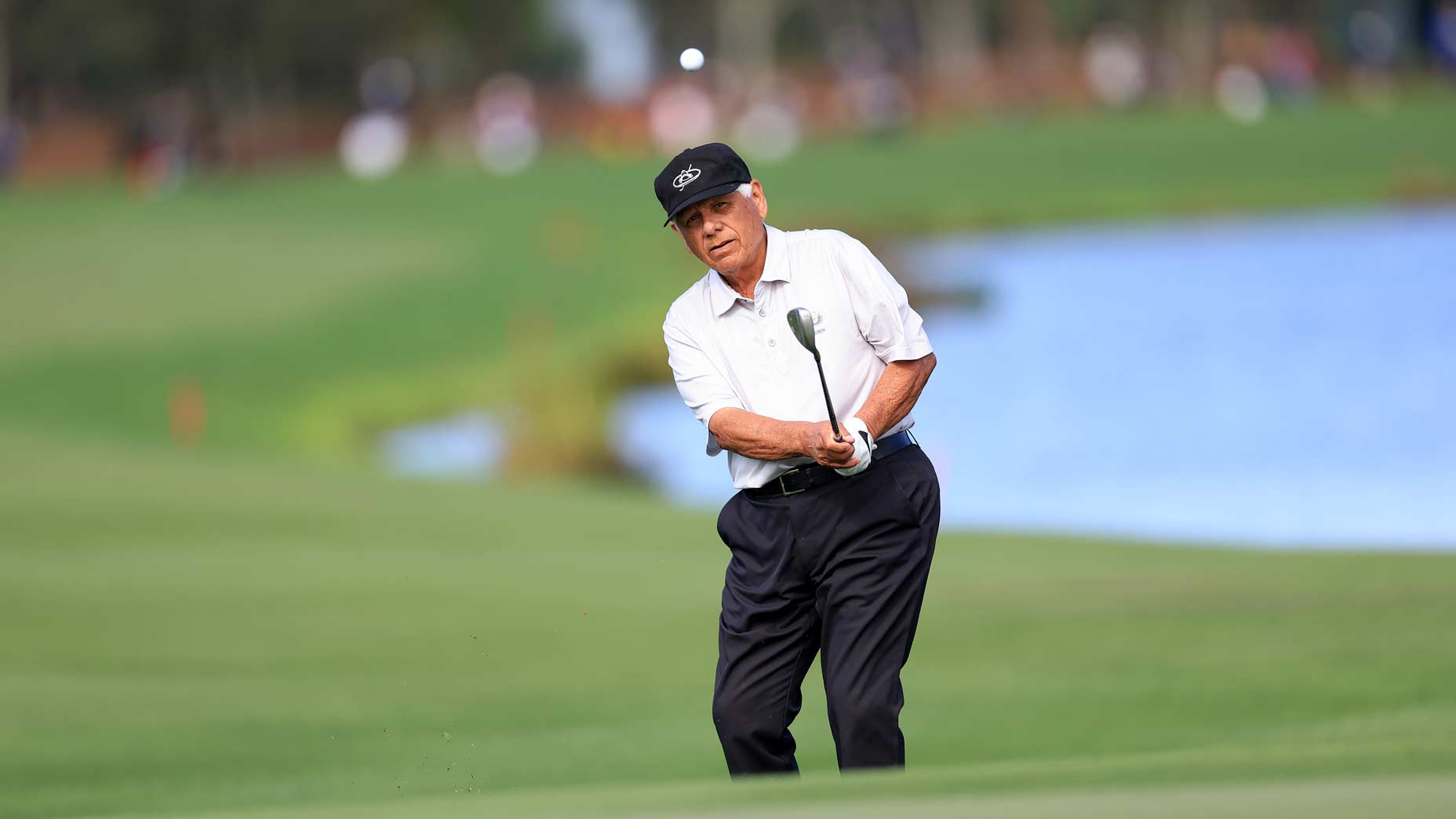
In his heyday, Lee Trevino could make the golf ball dance.
David Cannon/Getty Images
If there’s anyone who knows how to make a golf ball dance on the green, it’s Lee Trevino.
The “Merry Mex” was the premier ball striker of his day and could pull the string on just about any approach shot on any green, landing it beyond the hole and ripping it back toward the hole.
In today’s game, amateurs struggle to do the same thing. While advances in golf equipment have recreational golfers hitting it farther than ever before, it’s come at the expense of control.
Speaking at a press conference Tuesday ahead of a PGA Tour Champions event, the soon-to-be 85-year-old Trevino pointed to one piece of gear that’s made it so hard for amateur golfers to spin it: the golf ball.
“Golf balls today are manufactured a little bit different,” Trevino said. “They’re harder, they don’t spin as much, they don’t go as crooked as the balata did. That’s why the amateur has a difficult time stopping the ball on the green. They don’t have enough speed to spin it.”
Trevino pointed out that pros have no issue creating spin because speed is no issue for them. That’s why the types of shots at a PGA Tour event that get the biggest reactions sometimes are the ones that fly beyond the pin, only to check and work their way back to the hole.
Lee Trevino’s 3-step guide for putting spin on your approach shotsBy: Zephyr Melton
“That’s why you see the professionals still pulling the ball back,” Trevino continued. “When they hit the green, even though the green is hard, they still— well, it’s because of their clubhead speed. They’ve got so much speed that even though the ball’s hard, they’re still able to put spin on it, where a regular player uses that golf ball, they won’t be able to stop it on the green.”
GOLF’s Head of ClubTest and Gear Data Kris McCormack says this is where ball fitting can become so important. McCormack advises players to test golf balls from the green backward to the tee.
“Lee is 100 percent correct; the modern golf ball is much harder and doesn’t spin as much as anything in the old balata family,” McCormack, who recently came to GOLF full-time from sister company True Spec. “Testing from the green to the tee, gives the player the opportunity to see the reaction of the ball on wedge shots, and off of the putter.
“Independent tests have been done showing that the longest golf ball and shortest golf ball only very by 10 to 12 yards at full speed. However, you can get several hundred RPMs of spin for the spin delta, and a couple degrees of launch, between balls.”
If amateurs with clubhead speeds of 90 mph or less want to find more spin on the green, McCormack said looking for lower compression golf balls — such as the TaylorMade Tour Response, Bridgestone Tour B RX and RXS, or Callaway Chrome Soft — may be the answer to more control and distance.
Low Compression Golf Balls
“The golf ball is arguably the most important piece of equipment in your bag,” McCormack said. “Optimizing that part of your game can lead to improved control and consistency in the scoring zone.”
Want to overhaul your bag for 2024? Find a fitting location near you at True Spec Golf.
Latest In Gear

Jack Hirsh
Golf.com Editor
Jack Hirsh is the Associate Equipment Editor at GOLF. A Pennsylvania native, Jack is a 2020 graduate of Penn State University, earning degrees in broadcast journalism and political science. He was captain of his high school golf team and recently returned to the program to serve as head coach. Jack also still *tries* to remain competitive in local amateurs. Before joining GOLF, Jack spent two years working at a TV station in Bend, Oregon, primarily as a Multimedia Journalist/reporter, but also producing, anchoring and even presenting the weather. He can be reached at jack.hirsh@golf.com.

